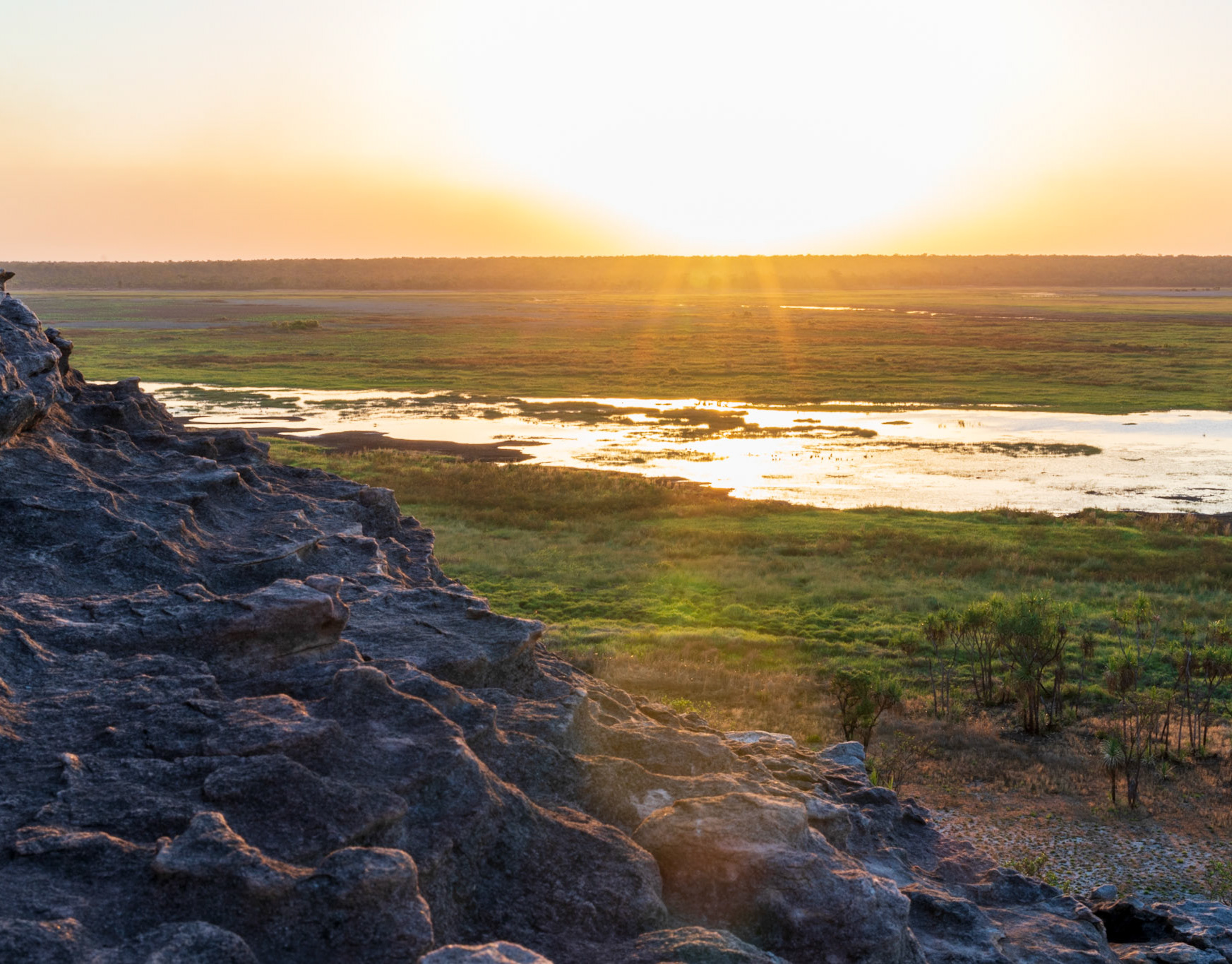Salties, the apex predator
It’s arguably the most iconic predator of Australia. The Jaws of the Northern Territory. The true star of Crocodile Dundee. What are we referring to? Saltwater crocodiles, of course!
On our recent trip to Kakadu National Park, we had the opportunity to get up close and personal with more salties (as they’re affectionately known) than we have ever seen before. Read on to find out more about them!
Saltwater crocodiles vs. Freshwater crocodiles
You can find 2 species of crocodiles in Kakadu National Park: the freshwater crocodile (Crocodylus johnstonii) and the saltwater or estuarine crocodile (Crocodylus porosus). Freshies are shy, much smaller, and are not known to be man-eaters – they mostly consume fish, birds, bats, reptiles and amphibians.
Salties are a very different story. They are the world’s largest reptiles, and continue growing as long as they live: the very largest saltwater crocodiles are likely to measure 6 to 7 m (240 to 280 in) in length and weigh 900 to 1,500 kg (2,000 to 3,300 lb).
Despite the name, saltwater crocodiles do not just live in salt water – they also live in fresh water, but have salt glands that allow it to survive in salt water if necessary.
Aggressive saltwater crocodiles
The Australian saltwater crocodile has the dubious honour of being the most aggressive crocodile in the world. What’s more, saltwater crocodiles have the strongest bite of any living animal!
It can prevail over pretty much everything that comes into its territory: in 2010, tourists in Kakadu saw a saltwater crocodile eat a 3m long bull shark! Saltwater crocodiles have also been observed to eat prey as large as tigers, water buffalo, and of course, humans.
salwater crocodile. Taken with Canon EOS 80D and EF 24-70mm f/4 IS USM. Aperture : f/8 - Speed : 1/320s - ISO : 100
No waterway in the Northern Territory can be considered to be completely free of crocodiles. Rangers monitor the more popular watering holes, but it is still impossible to be 100% sure of the absence of these fearsome predators.
That’s why the Northern Territory government has put in place its Be Croc Wise guidelines, which every visitor to the waterways of the NT should read.
Saltwater crocodile behaviours
Some would say crocodiles are lazy – we’d prefer to think of them as incredibly energy-efficient hunters. They float along using water currents, conserving energy, and wait till their prey approaches. When it is within range, the crocodile can strike at explosive speeds: it can swim at 24 to 29 km/h in short bursts, around 3 times as fast as the fastest human swimmers.
Jumping saltwater crocodile. Taken with Canon EOS 80D and EF 24-70mm f/4 IS USM. Aperture : f/8 - Speed : 1/320s - ISO : 100
It swallows small prey whole, while larger animals are forcibly dragged into water and drowned or crushed. While a crocodile’s bite is powerful, it does not chew; instead, it tears prey into smaller pieces by the “death roll”, in which the crocodile spins to twist off hunks of meat.
Saltwater crocodiles are more active and more likely to spend time in the water during the Australian summer; and are less active and spend relatively more time basking in the sun during the winter. The dry season in Kakadu is the best time to see crocodiles as shrinking water bodies force them to concentrate in smaller areas.
Saltwater crocodile population
Saltie eggs. Taken with Canon EOS 5D Mark IV + EF 100-400mm f/4.5-5.6L IS II USM. Aperture : f/5,6 - Speed : 1/640s - ISO : 800
Life is not always easy at the top, however. Despite crocodile mothers being caring and gentle parents, only about 1% of all crocodile hatchlings reach adulthood. Fiercely territorial adult crocodiles eat baby crocodiles, as do fish, birds and monitor lizards.
Saltwater crocodiles were hunted nearly to extinction before the 1970s. Since then, they have been a protected species, and have made a remarkable recovery. The wild saltwater crocodile population in the Northern Territory has grown from about 5,000 in the late 1960s to approximately 100,000 today, a number scientists say is close to what it once was.
Crocodiles have outlived the dinosaurs. After having seen the magnificent and terrifying saltwater crocodile up close in Kakadu National Park, one can certainly see why.
Looking for more on crocodiles?
For more pictures of the crocodiles of Kakadu National Park, check out our photo gallery here!
And if you want more informations on these amazing creatures you can check some very interesting National Geographic articles:

